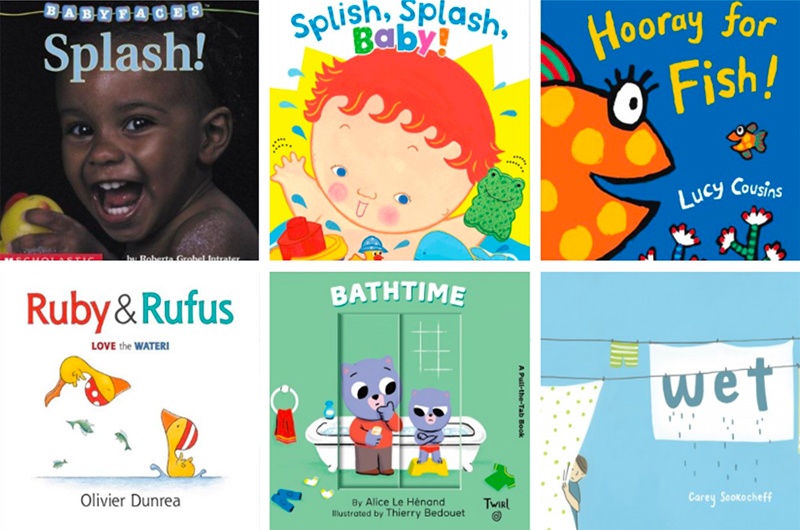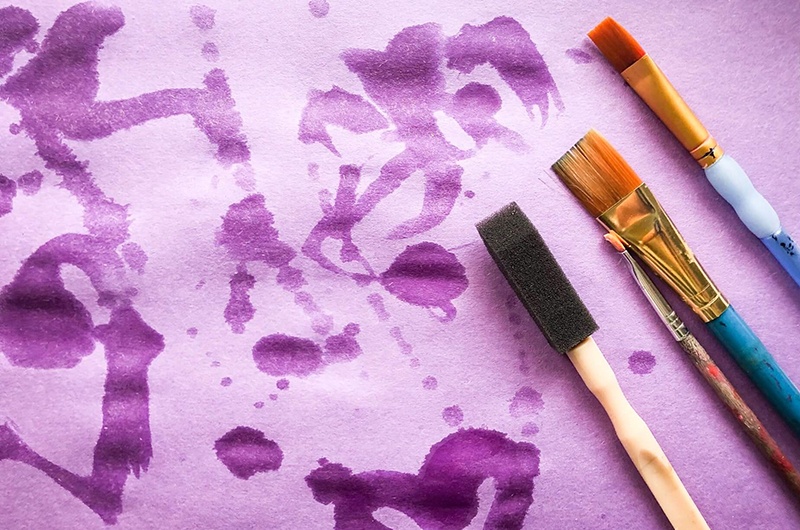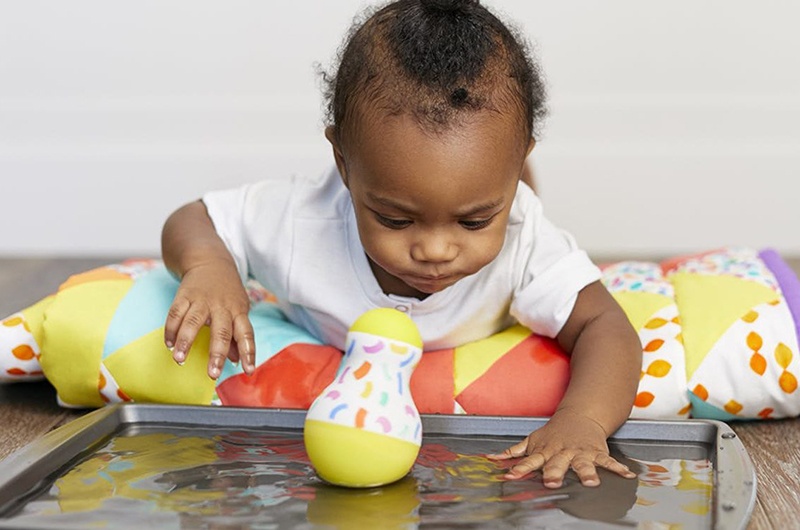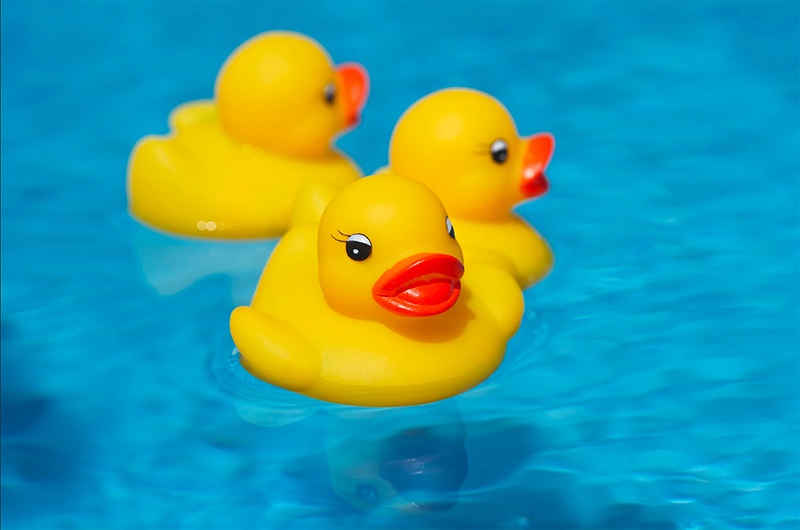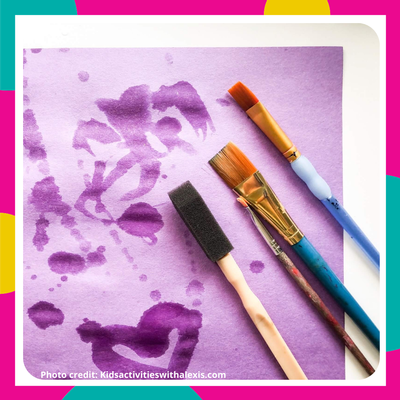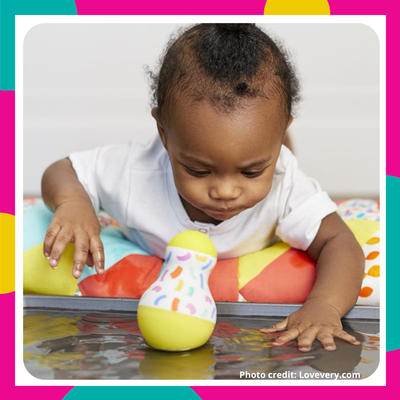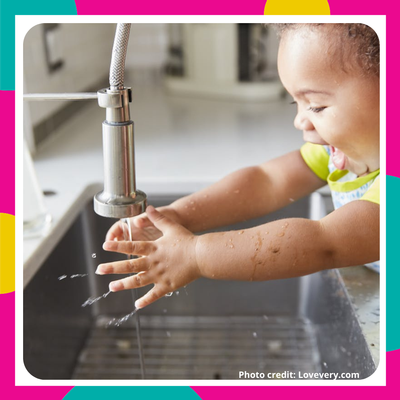Read, Baby, Read is a Free Library initiative focused on encouraging early literacy development among infants and young toddlers under two years old. We work with 12 participating libraries across Philadelphia to reach caregivers of all ages, providing resources that support early literacy skills, language development, and purposeful play. In addition, you can find early literacy tips and resources on our Instagram page @read.baby.read!
Each month, we bring you themed activity ideas based on the five early literacy practices from Every Child Ready To Read: Read, Sing, Write, Play, and Talk! So far, we’ve explored vehicles, animals, and the body.
This month is all about water!
READ
There are many fantastic board books available in the Free Library’s catalog that explore the theme of water in some way. It’s easy to place holds online for free and schedule curbside pick-up at select neighborhood libraries.
- Splash! by Roberta Grobel Intrater
Babies will love looking at the faces in this book full of water-related photographs.
- Splish, Splash, Baby! by Karen Katz
Your little one will enjoy using their fine motor skills when they lift the flaps in this book to reveal different bath toys.
- Hooray for Fish! by Lucy Cousins
The fun rhyming text in this book introduces all sorts of fish while exploring concepts like colors, patterns, shapes, and numbers.
- Ruby & Rufus Love The Water by Olivier Dunrea
This fun story explores what happens when water turns into ice.
- Bathtime by Alice Le Hénand
The tabs on this "pull-and-play" book make its bathtime story into an interactive experience.
- Wet by Carey Sookocheff
This simply illustrated book is a charming exploration of the different ways children can get wet.
SING
There are lots of ways to sing about water! Many children’s songs are about the ocean and the sea animals found within it. In the following storytime, Sarah sings a felt board version of "Slippery Fish," a silly song about the ocean food chain. Of course, there’s also the Raffi classic "Baby Beluga"! Songs like "A Hole in the Bottom of the Sea"—which are structured around repetition and addition—are great for helping children learn. For more ocean-themed songs, rhymes, and lap bounces, check out Jbrary’s Ocean Storytime playlist.
You can also sing about water by singing about rain! We like the scarf song "Rain on The Grass," the hand movement song "Little Raindrops Falling Down," and the touch-based song "Rain is Falling Down." Bathtime is another great time to introduce songs and rhymes about water. Check out this playlist for ideas. You can even try changing some of the lyrics of your favorite songs to make them about water as well!
WRITE
"Painting" with water is a great way to practice those fine motor skills without all the mess associated with using regular paint! It’s an easy compromise if you’re looking to paint but don’t have time to deal with clean-up. Grab some paintbrushes and let your child "paint" with plain old water on construction paper (or even on the sidewalk!) Explore the way that water makes the paper darker and experiment with the texture of the paper after it gets wet. You can also try painting with ice. Follow this tutorial to make colorful ice, and you’ll have an art activity that’s also an exciting sensory experience!
PLAY
Water play is a quick and easy way to incorporate sensory play into your daily routine, and there are lots of ways to do it. (Note: Remember that all water play requires active supervision—babies can drown in just one inch of water!) For the little ones, try pouring some water onto a baking sheet and add some objects that will float around. Lay your baby on their tummy in front of the baking sheet and let them splash with their hands. While your baby is busy engaging in this sensory experience, they’re also getting all the physical benefits of "tummy time"! Other baby-friendly water play ideas include making water-based sensory bags. Try a water-and-baby-oil combo, a bubble sensory bag, or simply fill a bag with ice. We think this duck pond sensory bag is adorable too!
For toddlers, you can make water play even more advanced. Fill a sensory bin with water and the possibilities are endless from there. You can add cups to encourage scooping and pouring, or sponges to encourage squeezing. Add some sea animal toys to make it a dramatic play experience (or add some plastic dolls and let your toddler give their doll a “bath”). Check out these additional excellent water play ideas!
TALK
Take the time to talk about water as you go about your day! One way to do that is to take a "house tour": go around your house to everywhere there is a faucet, and let your baby turn the water off and on. Babies love exploring the world around them, and house tours are a great way to encourage that sense of discovery without even leaving the house. As you experiment with the water in your house, use rich vocabulary like "spray," "drip," and "drizzle." Another great time to talk about water is during bathtime, of course! Use language like "splash" and "slippery" as you reap all the developmental benefits of bath time.
Be sure to follow us on Instagram for daily tips and resources about early literacy as well as weekly virtual baby storytimes. And stay tuned for next month’s installment of this blog series with a brand new theme!
Read Baby Read’s team includes Early Childhood Specialists, Sarah Jacknis and Natasha Smith, and Program Coordinator Naisha Tyler. If you have questions about our program, feel free to email Naisha Tyler at TylerN @ freelibrary . org.
Read Baby, Read is made possible by a generous grant from the William Penn Foundation.
Have a question for Free Library staff? Please submit it to our Ask a Librarian page and receive a response within two business days.

